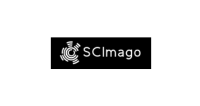RETENÇÃO DE NITROGÊNIO EM SUÍNOS NA FASE DE CRESCIMENTO OBTIDA PELOS MÉTODOS DE ABATE COMPARATIVO E BALANÇO DE NITROGÊNIO
DOI:
https://doi.org/10.5380/avs.v15i2.18109Palavras-chave:
excreção de nitrogênio, nutrição animal, retenção de proteína, animal nutrition, nitrogen excretion, protein retentionResumo
Um estudo foi realizado com o objetivo de comparar a retenção de nitrogênio obtida pelos métodos de balanço de nitrogênio (BN) e abate comparativo (AC) em suínos alimentados com dietas contendo diferentes teores de proteína. Foram usados 35 suínos castrados (34 ± 0,9 kg de peso vivo), sendo 9 no BN e 26 no AC. Os suínos receberam rações isoenergéticas e isolisínicas formuladas de acordo com o conceito de proteína ideal. O delineamento experimental utilizado foi o inteiramente casualizado com os tratamentos em esquema fatorial com dois métodos (BN e AC) e três teores de proteína (12, 14 e 16%). O nitrogênio retido (NR) foi menor no AC e não sofreu influência da quantidade de proteína da dieta. A proteína retida (PR) foi influenciada pelos teores de proteína da dieta no método BN. O NR estimado pelo método BN foi 30% superior quando comparado ao NR estimado pelo abate comparativo. Esses resultados confirmam que as estimativas de retenção de nitrogênio obtidas com o método de balanço de nitrogênio são superiores as estimativas obtidas com o método do abate comparativo, e que a discrepância entre os métodos é maior com o aumento do teor de proteína da dieta.
Como Citar
Edição
Seção
Licença
Autores que publicam nesta revista concordam com os seguintes termos:
- Autores mantém os direitos autorais e concedem à revista o direito de primeira publicação, com o trabalho simultaneamente licenciado sob a Creative Commons - Atribuição 4.0 Internacional que permite o compartilhamento do trabalho com reconhecimento da autoria e publicação inicial nesta revista.
- Autores têm autorização para assumir contratos adicionais separadamente, para distribuição não-exclusiva da versão do trabalho publicada nesta revista (ex.: publicar em repositório institucional ou como capítulo de livro), com reconhecimento de autoria e publicação inicial nesta revista.
- Autores têm permissão e são estimulados a publicar e distribuir seu trabalho online (ex.: em repositórios institucionais ou na sua página pessoal) a qualquer ponto antes ou durante o processo editorial, já que isso pode gerar alterações produtivas, bem como aumentar o impacto e a citação do trabalho publicado.













